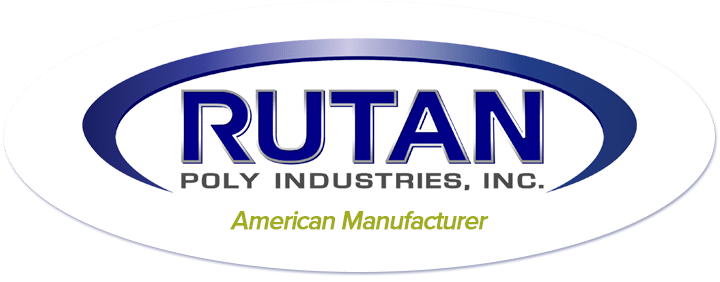When you think about materials for plastics bags, you just think “plastic” – not necessarily the types of plastics used in creating them. Here at Rutan Poly, we thought we’d give you an insider’s look into what materials we use for our various bags, with each one serving a distinct purpose.
Let’s take a look at the seven most popular ones:
1. Polyethylene Plastics (PE)
- Inexpensive
- Lightweight
- Durable
- Strong
- Water resistant
- Extreme temperature resistant
PE bags have incredible durability and moisture resistance qualities that make this an ideal material for all types of industrial packaging supplies.
2. High Density Polyethylene Plastic (HDPE)
- Non-porous
- Non-stretching
- Economical and affordable
- Creates vapor and moisture barrier
- Stronger than LDPE (see below) but not as tear resistant
HDPE has a frosted appearance and tends to make a crackly or crinkly sound when you crush it. Most often used for instances where a very thin, cost-effective bag is needed. If you are not looking for tear resistance, then these classic high density liner bags are for you.
3. Low Density Polyethylene Plastic (LDPE)
- Most widely used material
- Strong
- Stretchable
- Good clarity
- High tear resistance
- Clear
- Easy to print on
Commonly used for products without sharp points, LDPE applications include boutique retail carry bags, heavy duty garbage bags, and press seal bags.
4. Linear Low Density Polyethylene Plastic (LLDPE)
- Non-porous
- Extremely stretchable
- Tear and puncture resistant
- Less costly than LDPE
- Good clarity
This type of plastic is commonly used for packaging, liner and trash applications.
5. Metallocene
- High clarity
- Tough
- Extremely tear resistant
This is a material manufactured utilizing a metallocene catalyst, which results in high clarity film with superior strength. They are used for trash liners and product packaging.
6. Anti-Static
- Available in gray or pink
- Treated with anti-static additives that help reduce static electricity
Perfect for electronic component packaging, our amine-free antistatic films and bags are FDA approved. Anti-static plastic is critical in many applications, as any build-up of static electricity can occur when sliding or rubbing of a material happens. The resulting electrostatic voltage can be discharged with a spark when coming into contact with a person or microcircuit. The electrostatic discharge (ESd) is a sudden flow of electricity between two objects, leading to catastrophic effects.
7. Ethylene Vinyl Acetate (EVA)
- Added to plastic resins to increase strength in extremely low temperatures
- “Rubber-like” in softness and flexibility
- Good clarity and gloss
- Low-temperature strength
- Stress-crack resistance
- UV resistance
- Waterproof
EVAs are commonly used for freezer storage bags, as well as hot melt adhesives (think hot glue sticks) and some brands of high-end soccer cleats. Can also be used in biomedical engineering as drug-delivery devices.
Contact Rutan Poly Industries
To learn more about the many types of plastics we use for our custom poly bags, contact us in NJ toll free at 800-872-1474.





